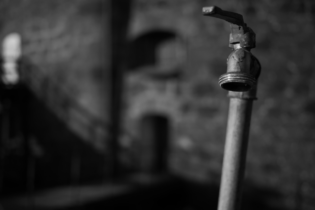To improve competitive position, Rainbow Reservoirs has begun local manufacture of several reservoir component parts, and plans shortly to begin local rolling of the Zincalume steel panels from which the reservoir walls are constructed.
Local rolling will increase the number of flat panels that can be packed by the source factory overseas into a shipping container, lowering shipping costs and helping Rainbow to keep prices down. Panel cutting and punching is likely to continue abroad because of the precise nature of these operations and the high cost of the machinery needed to carry them out. Announcing plans for local panel rolling, Rainbow’s managing director Wayne Thompson explained that a worldwide shortage of fresh water continues to drive reservoir construction. Fresh water comprises just three percent of all water covering the world’s surface, and much of it occurs only in the form of unusable ice, he said. According to Thompson, the steel panel reservoir in recent years has been readily adopted by commerce, industry and construction because of its increased structural and general sophistication, and because of the savings in space and ease of installation delivered by a panel design. However, agriculture has largely ignored this convenience, preferring the bricks and mortar structures which have over time become ingrained as the generally accepted method of construction. “In some sectors, the steel alternative remains incorrectly viewed as expensive,” Thompson said.“The purchase price is possibly generally higher than a bricks-and-mortar alternative, but when viewed in terms of overall lifetime cost the panel reservoir is always much, much cheaper than bricks and mortar, and it carries the additional advantage of relocatability.”
Thompson explained that a lower lifetime cost is the direct result of the longer effective life of the steel panel reservoir. His own product, the Rainbow reservoir, has leak-free, corrosion-free installations going back 30 years and more. The bricks and mortar reservoir, by contrast, has a generally accepted effective lifespan of only fifteen years. The inherent strength of the steel reservoir, too, is often misunderstood. Thompson argues that the cracks and bursts that routinely occur in bricks-and-mortar reservoirs (the result of unsound construction and earth movement) should cast doubt on a preference for older methods of reservoir construction. “Although steel remains expensive, the price of cement has recently seen a dramatic rise, reducing the advantage of a lower initial outlay for a bricks and mortar reservoir,” he said. “When the projected life of such a structure, say fifteen years, is compared to the life of 30 years, 40 years and more of a steel reservoir, the case for the latter becomes clear.” Relocatability is a further advantage, Thompson pointed out. “Whereas the bricks and mortar construct is fixed, the steel reservoir’s design facilitates easy relocation. Should the source of the steel reservoir’s water run dry, it can simply be moved. “In this way, the steel reservoir becomes an asset rather than a consumable.”







